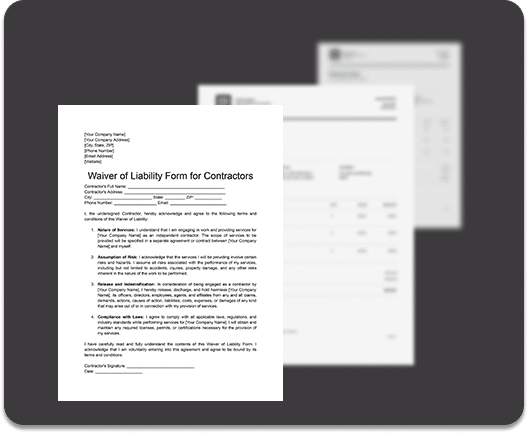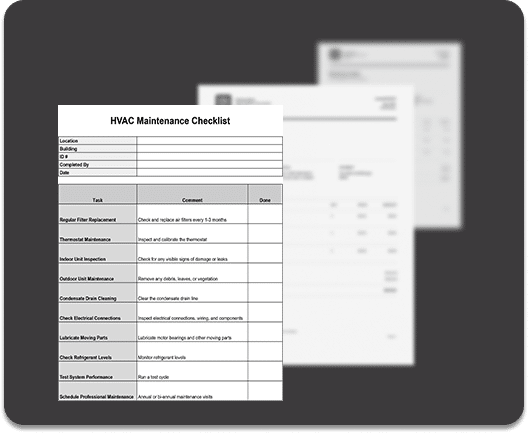Download, Customize, and Print Your Free Waiver of Liability Form for Contractors
Protecting your interests as a homeowner or company owner is critical when hiring contractors for various tasks or services. A waiver of liability form for contractors is an essential document that can help protect your rights.
This legally binding agreement serves as an effective instrument for mitigating potential risks and defining the rights and liabilities of both parties concerned.
In this post, we will look at the importance of a waiver of liability form for contractors, and its main components, plus provide you with free downloadable and printable templates. By understanding and implementing these templates, you can create a safer work environment while maintaining clarity in your client relationships.
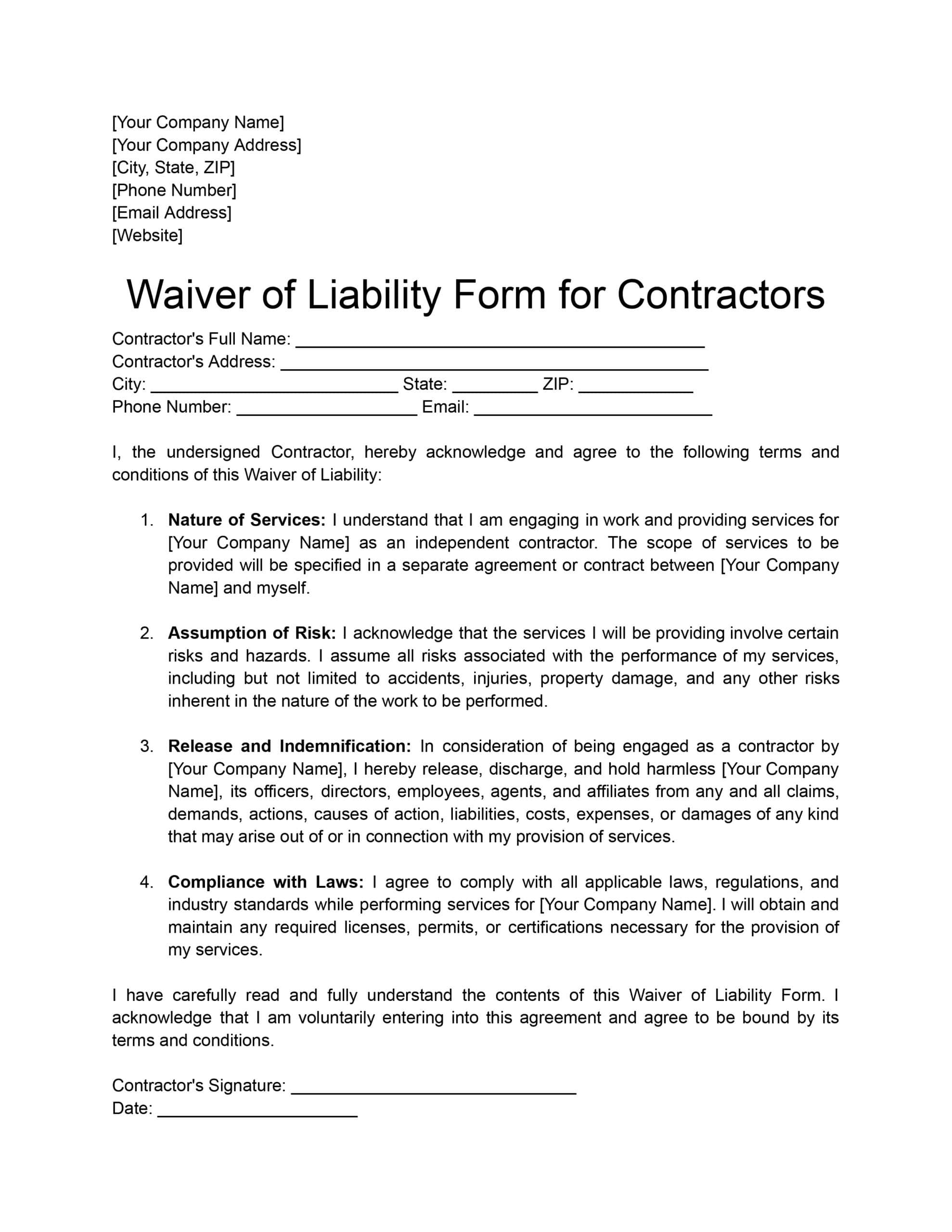
Waiver of Liability Form for Contractors
With this printable PDF sample of a release of liability waiver form for contractors, you can achieve the transparency you need in your contracts. This contractor waiver and release form template, which is available in PDF, Word, and Google Doc format is an easy way to safeguard your interests. With this simple form, you can protect your projects, define responsibilities, and reduce risks.
Download File
-

PDF
-

Word
-

Google Doc
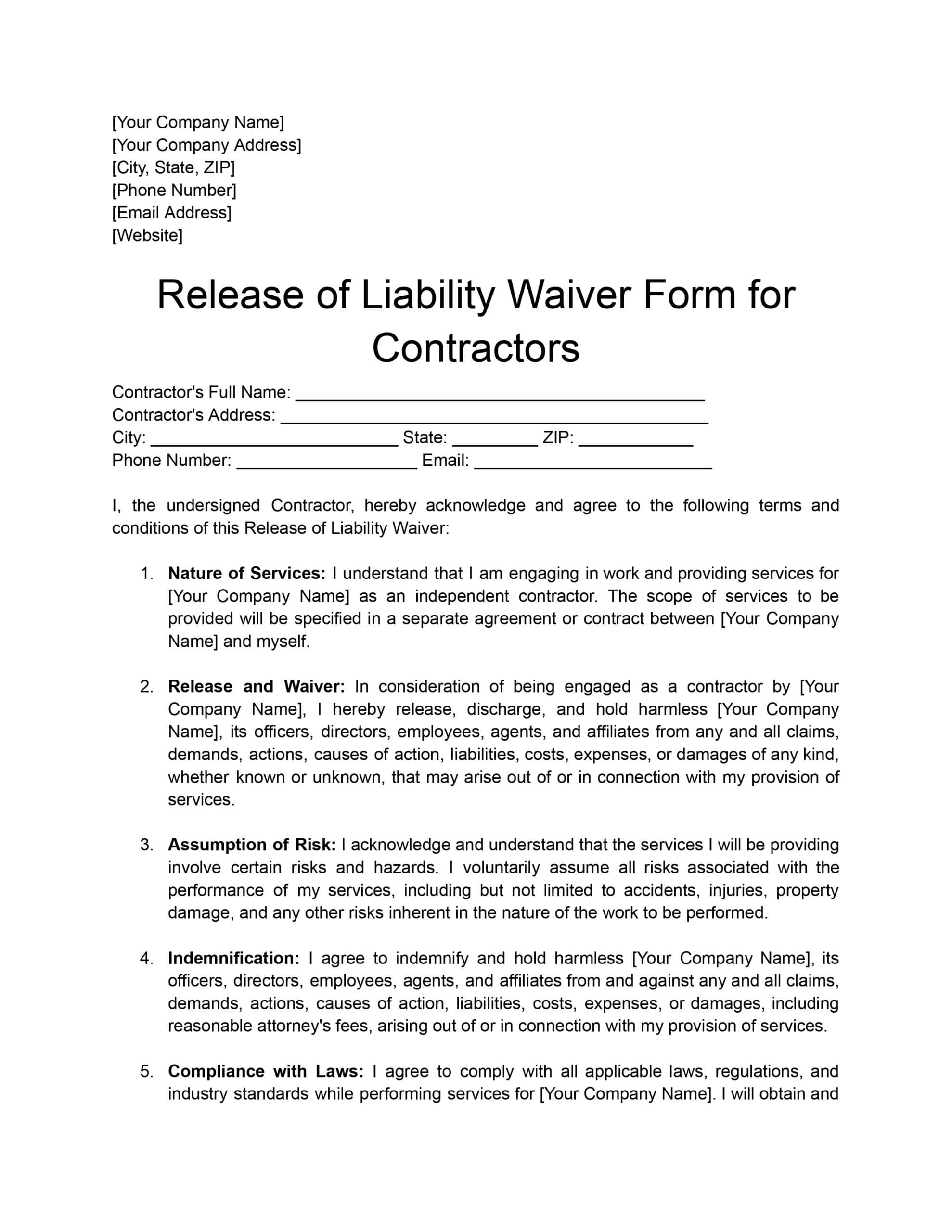
Release of Liability Waiver Form for Contractors
Our general liability waiver form for contractors is a must-have for every project. Avoid potential risks, safeguard your interests, and foster trusting relationships with this user-friendly form. Download and customize the free version of our liability waiver template in PDF, Word, or Google Doc format today.
Download File
-

PDF
-

Word
-

Google Doc
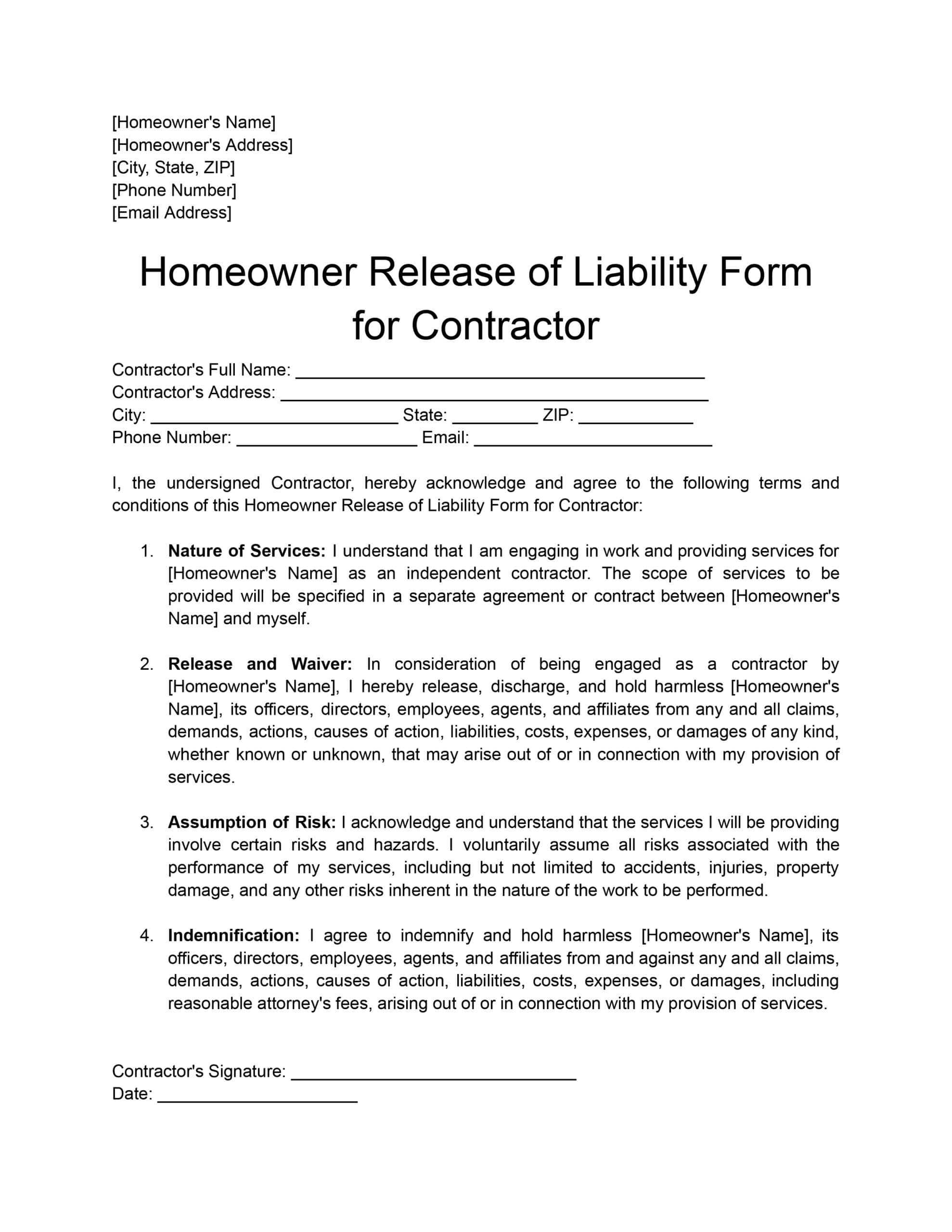
Homeowner Release of Liability Form for Contractor
Our homeowner release of liability form for contractors is an effective tool for protecting your rights. This template includes a detailed liability release form for your contractor interactions. Our user-friendly template, which is available in PDF, Word, and Google Doc formats, promotes clarity and transparency in your projects. With this customizable release of liability form, you can mitigate risks and clarify responsibilities.
Download File
-

PDF
-

Word
-

Google Doc
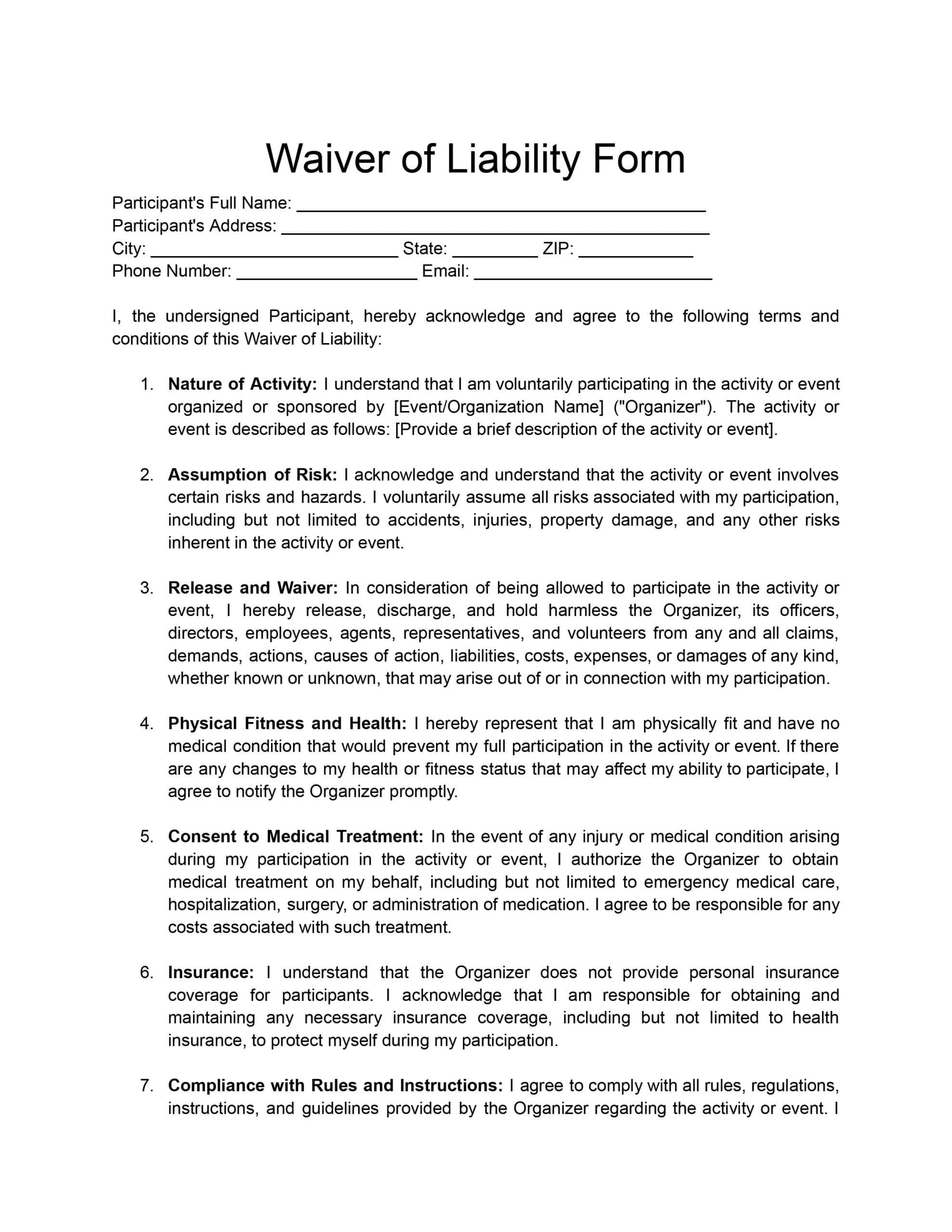
Waiver of Liability Form
Our free sample of a waiver of liability form is a must-have document for anybody looking to protect their interests. This free waiver of liability form is available in PDF, Word, and Google Doc formats, and can be easily customized to suit your needs. This simple liability waiver form helps to reduce potential risks and clarify responsibilities on various construction projects.
Download File
-

PDF
-

Word
-

Google Doc
Stay Protected & Compliant With Workyard’s Time Tracking App
Every construction business should seriously consider using a digital time tracking app to remain compliant, streamline payroll processes, eliminate tedious hours of admin work, and improve project profitability.
A GPS Time Tracker That Ensures Accuracy
Eliminate excessive payroll expenses caused by inaccurate time cards. Workyard’s construction time sheet app provides employee arrival times, departure times, and precise addresses using the most accurate GPS technology in construction. To make auditing timesheets even easier, Workyard uses smart alerts to surface potential time card mistakes.
Try For Free
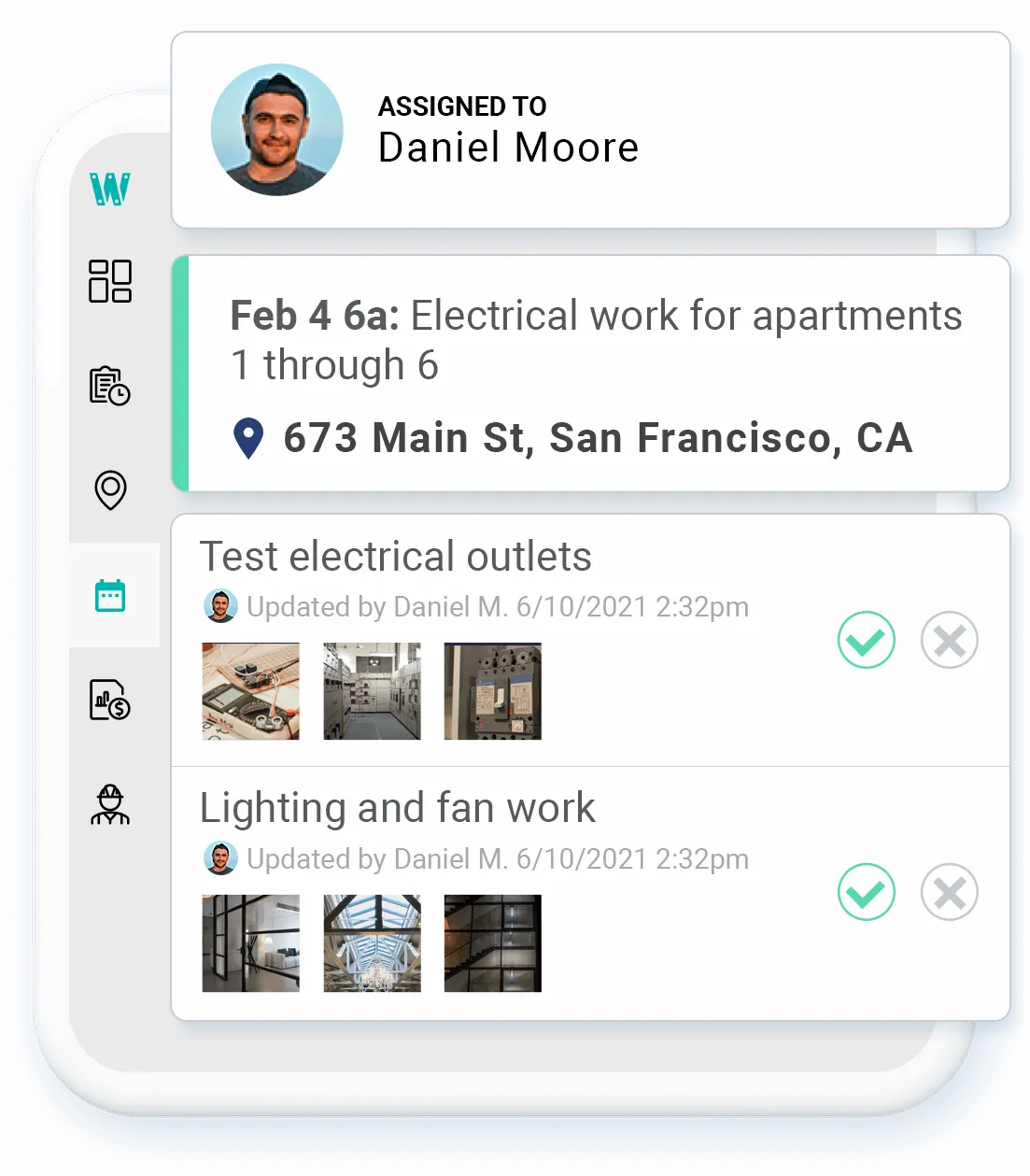
Built-in Scheduling & Task Management
By automatically displaying your real-time labor costs down to the individual tasks done by each employee, Workyard helps you see how much you’re spending on each of your jobs. Workyard’s up-to-the-minute data helps you gauge if every employee’s time is being used efficiently.
Try For Free
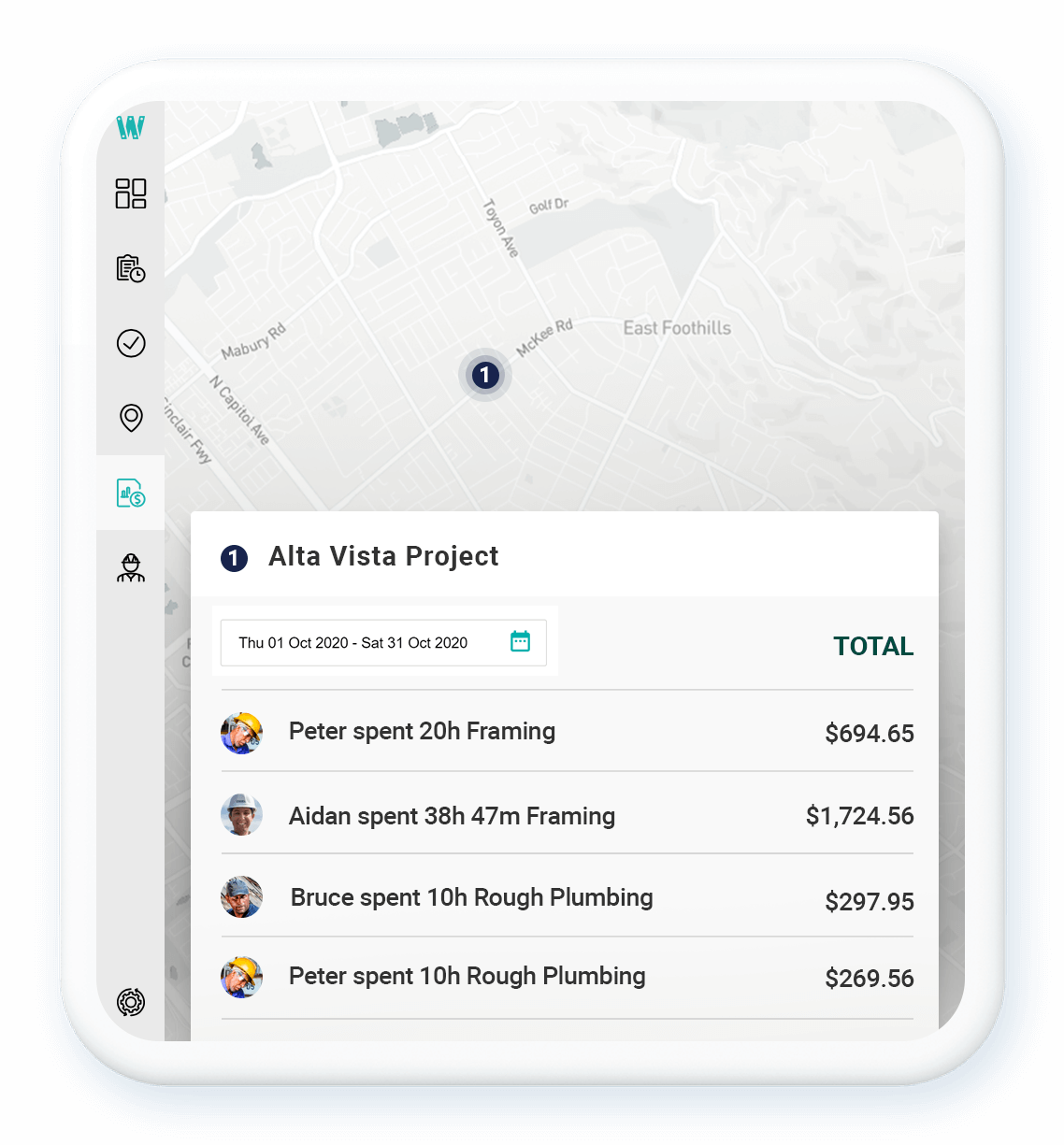
Track Project Labor Costs
Workyard’s construction job costing software makes it easy for your crew to tag their hours to projects and tasks, providing you with real-time data you need to increase the accuracy of client invoices and improve profitability on every project.
Try For Free
Top questions about waiver of liability forms for contractors
We cover:
-
How do I write a personal liability waiver? -
Do liability waivers actually work? -
What is a standard waiver of liability? -
What do you put in a liability waiver?
How do I write a personal liability waiver?
Writing a personal liability waiver entails carefully crafting a document that details the potential risks and relieves the responsible party from any liability.
When writing a personal responsibility waiver, you should include the following:
- Title: Begin with a clear heading such as “Personal Liability Waiver” or something similar.
- Introduction: Give a brief explanation of the waiver’s purpose and the activity or event to which it applies.
- Activity or event description: Clearly define the nature of the activity or event, including any possible dangers.
- Assumption of risk: State that the person is aware of, understands, and willingly accepts the inherent hazards involved with the activity or event.
- Release and waiver: Make it clear that the participant waives all liability or claims stemming from participation in the activity or event. State that the participant is solely responsible for any injuries, damages, or losses that may arise.
- Signature and date: Make an area for the participant to sign and date the waiver.
Remember that it is critical to get legal advice to verify that your personal responsibility waiver is legally sound and suitable to your individual case and jurisdiction.
Do liability waivers actually work?
A liability waiver or liability agreement can be successful in some cases, although its enforceability varies depending on jurisdiction and individual circumstances. While liability waivers are widely used to restrict or eliminate legal liability, their efficacy is dependent on a number of circumstances, including the text of the waiver, the applicable laws, and the facts of the case.
It is critical to understand that a liability waiver does not provide blanket protection and cannot release a party from obligation in all circumstances. Waivers can be scrutinized by courts and not enforced if they are judged unconscionable, against public policy, or fail to fulfill specific legal conditions. Waivers can also be rendered ineffective in circumstances of grave negligence, willful wrongdoing, or certain statutory offenses.
Factors such as the clarity of the wording used, the knowledge and comprehension of the parties concerned, and the negotiating power of the parties can all have an impact on the enforceability of a liability waiver. Different jurisdictions’ laws and regulations may also affect the enforceability of liability waivers.
Given the complexities and varying nature of legal restrictions, it is best to speak with a legal practitioner to verify that your contractor liability waiver form is correct, adapted to your individual circumstances, and in accordance with local laws.
What is a standard waiver of liability?
A standard waiver of liability, also known as a liability waiver or release of liability form, is a legal document that protects a party from legal claims or liabilities resulting from participation in a certain action or event. It is usually used in situations where there are inherent risks, such as sports, recreation activities, or certain business ventures such as construction projects.
A standard waiver of liability typically includes the following key elements:
- Parties involved
- Description of the activity
- Assumption of risk
- Release and waiver
It is important to note that the specific subject matter and language of a typical waiver of responsibility could vary based on the jurisdiction and the action or event being covered. To guarantee that a waiver is effective and enforceable, it is best to speak with a qualified attorney who can tailor the waiver to your unique needs while also complying with local laws and regulations.
What do you put in a liability waiver?
When drafting a liability waiver, it is important to include certain elements to effectively protect the releasor from legal claims or liability.
Here are the essential components to include in a liability waiver:
- Heading: Starting with a clear heading that identifies the document as a liability waiver or release of responsibility form is a good place to start.
- Parties: Make it clear who the parties engaged in the waiver are, including the releasor (the person releasing liability) and the releasee (the person or entity being freed from obligation).
- Activity or event description: Give a clear and accurate description of the activity or event for which the waiver is being signed. Any known risks or hazards related to the activity should be included in this description.
- Assumption of risk: Include a statement in which the releaser accepts and understands the possible dangers and freely assumes the risks associated with the action or event. This demonstrates that the releasor is aware of the risks and is prepared to participate despite them.
- Waiver and release: Make it clear that the releasor relieves the releasee from any liability or claims stemming from their participation in the activity or event. This should be a wide and complete release of all claims, including those based on negligence and other legal grounds.
- Signature and date: Provide a space for the releasor to sign and date the waiver, showing their acceptance and comprehension of its contents.
The post Waiver Of Liability Form For Contractors: Download & Print for Free! appeared first on Workyard Blog.


